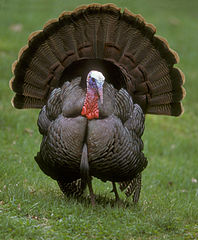
Recent research for my current project has turned up a few interesting insights into how eighteenth century New Englanders celebrated Thanksgiving, which makes an interesting change for the annual stories about the first Thanksgiving in 1621.
Over a hundred years since the Pilgrims stepped ashore, colonial Americans did not worry about starvation or share the holiday with Native Americans who, by this time, had been largely banished to the western frontier. Salem and other towns on the Eastern Seaboard had different holiday traditions.
Thanksgiving was the most important holiday on the New England calendar, particularly since most people dismissed Christmas as a day of almost pagan excess. Thanksgiving occurred between late November and mid-December, after the harvest was in, but before annual butchering of animals. That labor-intensive event took place about a week after Thanksgiving. Consequently, various species of poultry took pride of place on the menu.
Thanksgiving celebrations began with a church service, so people could express their gratitude for a successful year. In 1750 Calvinist churches in Salem still took a grim and fearful approach to God, but as the century moved on, a more intellectual Unitarian attitude affected the worship services.
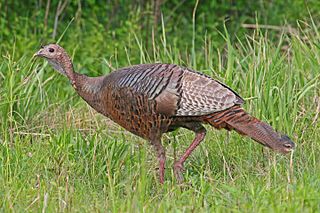
Once church was over, people returned home to prepare for the holiday. Dinner was a family party with about thirty guests, and began at 3:00 in the afternoon. Usually there would be two full tables of food, plus a smaller table for the children. The menu sounds similar to our modern traditions, but the ingredients differed.
Wild turkeys, in particular, were much smaller than the turkeys available in our supermarkets. Male turkeys were about 16 pounds, and female about 9 pounds.
Dinner was served in two courses.
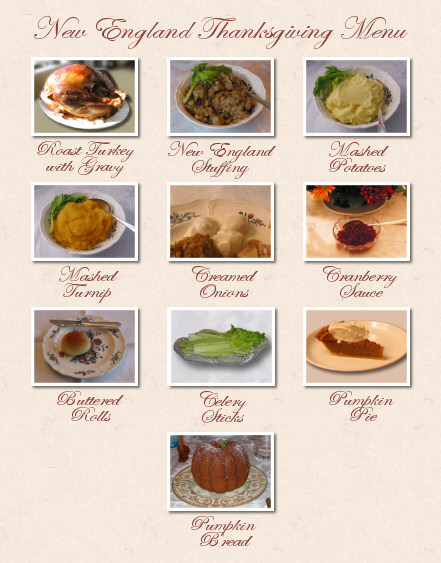
First Course Menu
The first course featured turkey which might be roasted or baked in a pie, as well as chicken pies. Side dishes included various seasonal vegetables, pickles, preserves, breads, honey, and cheese.
Second/Dessert Course Menu
The dessert course consisted primarily of fruit pies. Mincemeat and plum pudding were also served
After dinner, gentlemen enjoyed wine or other beverages while ladies retired to the drawing room.
Hunting the Slipper
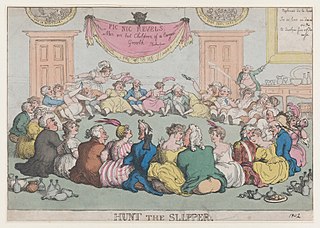
After the guests reunited, there were various games, including Hunt the Slipper, a circle game in which one person is a customer and the others are the cobblers. The customer takes his slipper to a cobbler and asks him to repair it. The cobbler accepts the slipper. When the customer returns, the cobbler says the slipper is lost. Now the customer must try to find the slipper while players pass the slipper under their knees so the customer can’t see who has the slipper.
People went for after dinner strolls and called on their neighbors. Many hosts included hired musicians. the day might conclude with a cold super of leftovers from the earlier meal. Most people departed for home by 11:00.
Contemporary Recipes
As a sample of 18th century cooking, I’ve included two recipes from the Compleat Housewife: or, Accomplish’d Gentlewoman’s Companion, published in 1758.
To Roast a Turkey
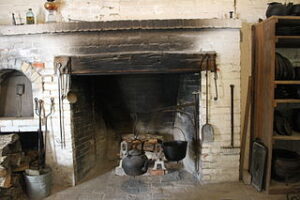
Take a quarter of a pound of lean veal, a little thyme, parsley, sweet marjoram, a spring of winter savory, a bit of lemon peel, one onion, a nutmeg-grated, a dram of mace, a little salt, and half a pound of butter.
Cut your herbs very small.
Pound your meat as small as possible and mix all together with three eggs and as much flour or bread as will make it of a proper consistence. Then fill the crop of your turkey with it, paper the breast and lay it down a good distance from the fire. An hour and quarter will roast, if not very large.
To Make a Chicken Pie
Take six small chickens; roll up a piece of butter in sweet spice & put into the chickens; season them; lay them in the pie with marrow of two bones and with fruit & preserves – prunella’s, damsons, gooseberries. Close the pie.
🦃 🦃 🦃
Illustrations
A Wild Turkey During Mating Season.
New England Thanksgiving Dinner in Falmouth, Maine 2005.
Female Wild Turkey by Judy Gallagher.
Hunt The Slippers by Thomas Rowlandson.
Open Hearth Cooking, Kent Plantation House by Billy Hathorn.

Sandra Wagner-Wright holds the doctoral degree in history and taught women’s and global history at the University of Hawai`i. Sandra travels for her research, most recently to Salem, Massachusetts, the setting of her new Salem Stories series. She also enjoys traveling for new experiences. Recent trips include Antarctica and a river cruise on the Rhine from Amsterdam to Basel.
Sandra particularly likes writing about strong women who make a difference. She lives in Hilo, Hawai`i with her family and writes a blog relating to history, travel, and the idiosyncrasies of life.

